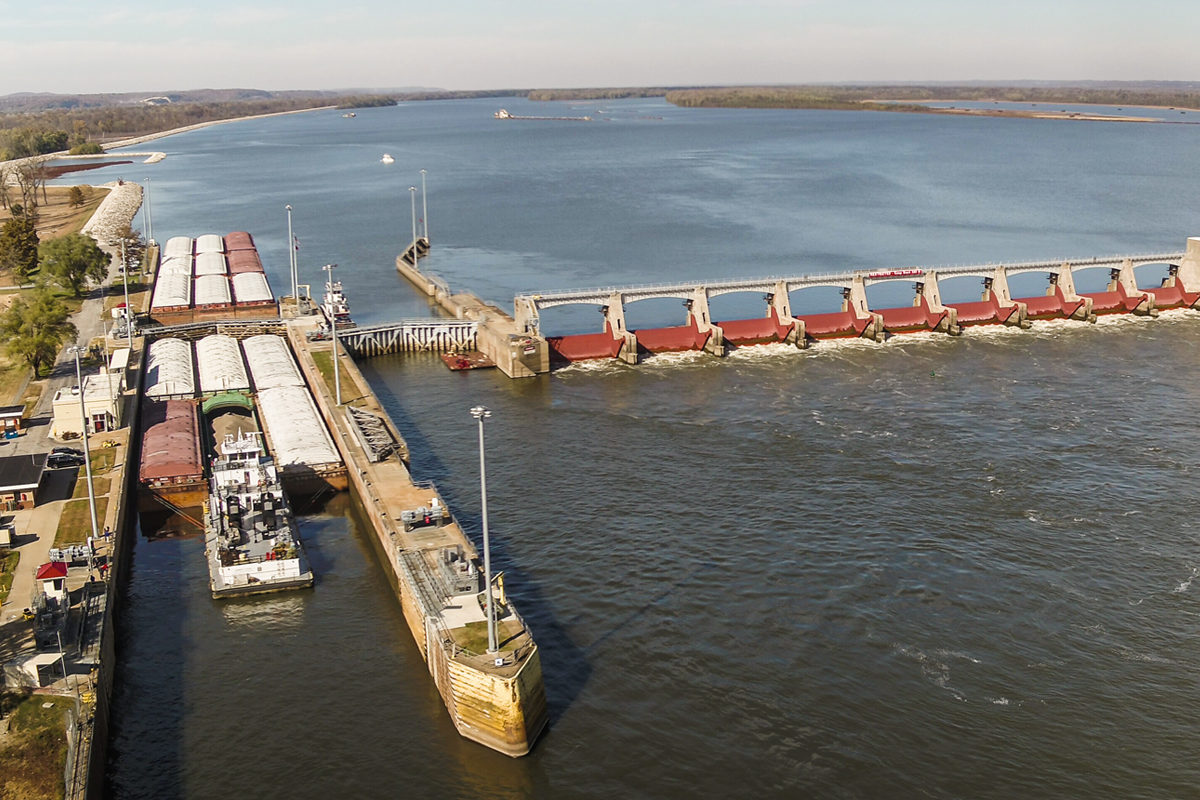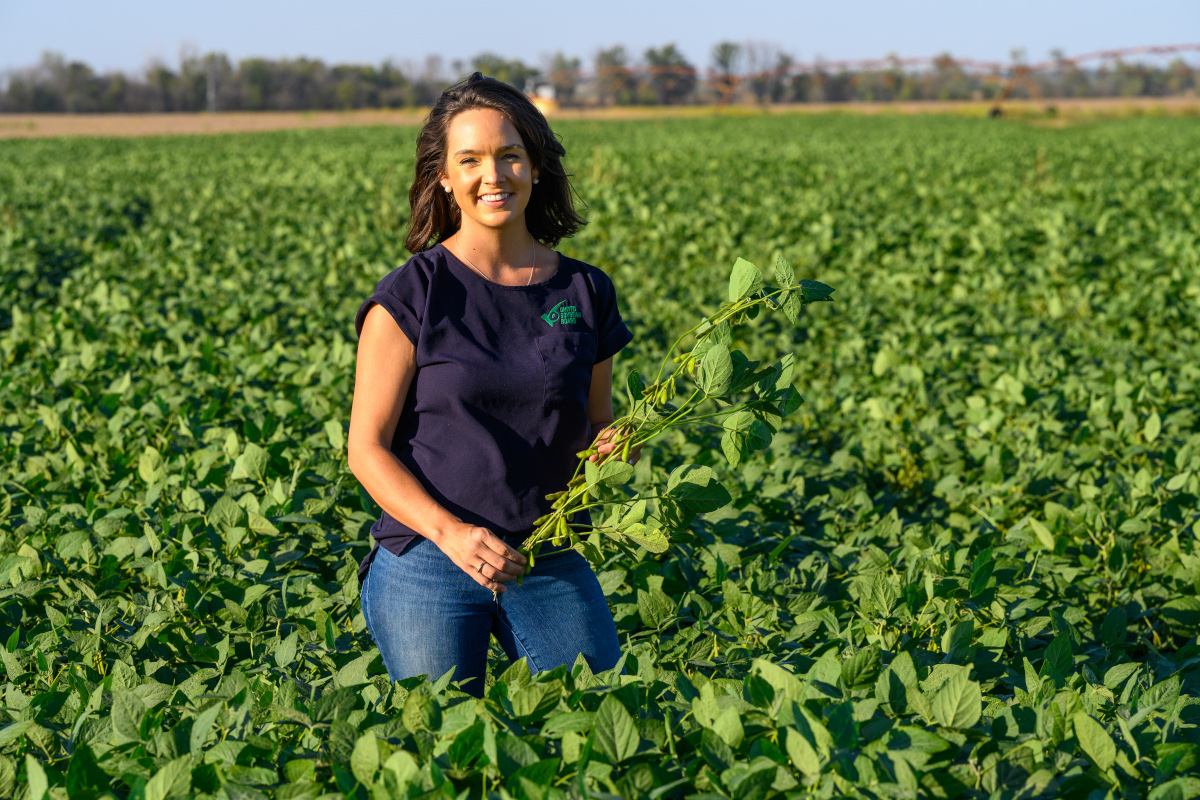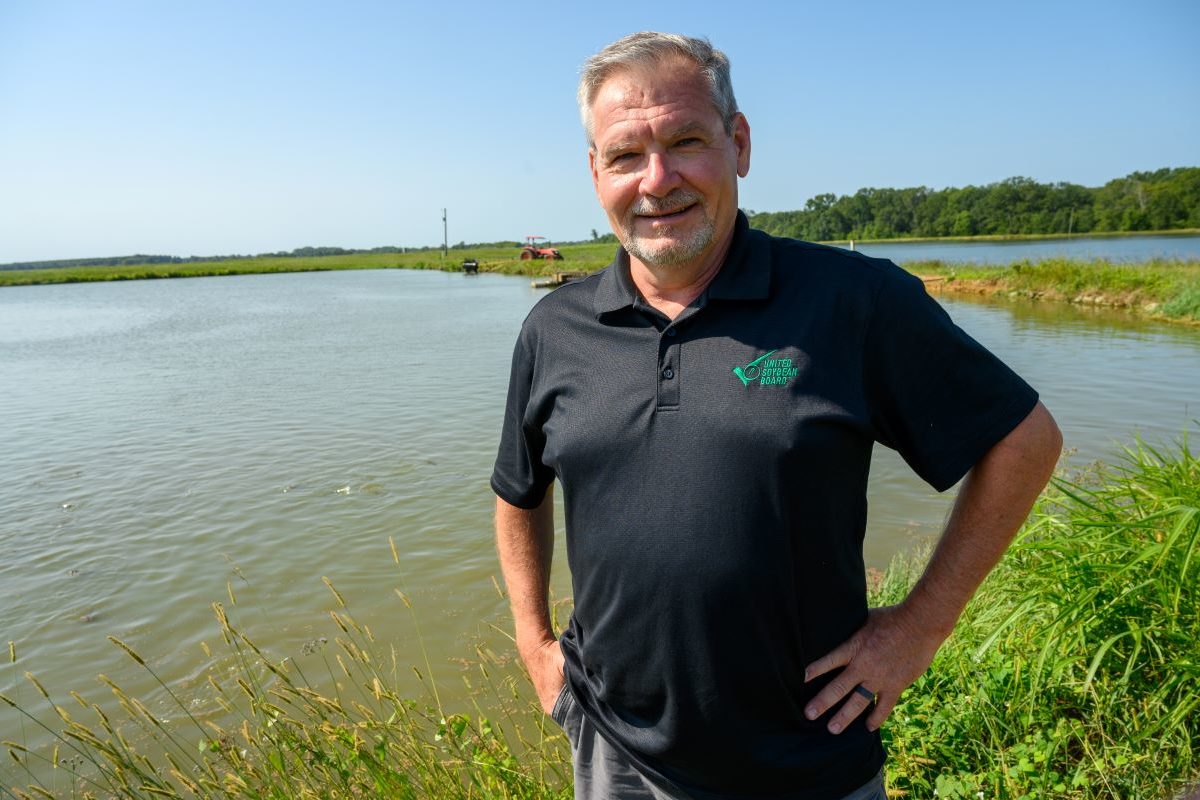More Options, More Opportunities: Diversifying the Soy Supply Chain

The infrastructure that takes your soy from the farm to the feed trough is going deeper and farther than it ever has before — literally. Your soy checkoff is investing in projects to optimize the transportation channels that support soybean exports, facilitating trade to meet the ever-growing demand for your crop.
Setting Sail on the St. Lawrence Seaway
The St. Lawrence Seaway reaches 2,340 miles from the Atlantic Ocean to the head of the Great Lakes in Duluth, Minnesota, and currently carries less than 2% of U.S. soybean exports. The Gateway Incentive program, an agreement between the Soy Transportation Coalition and the St. Lawrence Seaway Management Corporation incentivizes more agricultural shippers to use the route through SLSMC’s Gateway Incentive Program.
“As export customers continue to look to our soybeans for qualities they value, like sustainability, the St. Lawrence Seaway represents a great opportunity for soybean farmers,” says Gene Stoel, a Minnesota soybean grower and soy checkoff farmer-leader.
Stoel spent some time working in the grain elevator business in Minnesota and experienced the need for optimization firsthand.
“We used to transport a lot of soybeans on the St. Lawrence Seaway and ship them out of the country,” he says. “We don’t do that anymore because of efficiency concerns.”
As demand for soybeans continues to grow around the world, supply chain stakeholders need options to meet demand quickly and efficiently. This agreement increases options and supply chain resiliency by reducing shipping tolls on new shipments of soybeans and agricultural freight via the St. Lawrence Seaway by 50% during the 2021 shipping season. For the soy checkoff, strategic partnerships like this one ensure U.S. Soy continues to benefit from the country’s top-notch infrastructure system.
“Farmers do a pretty good job of raising soybeans, but we still have to sell them and get them to buyers. It makes a lot of sense to keep doing anything we can do to get our beans where they need to go,” says Stoel.
Soy checkoff farmer-leaders, members from 13 state soybean boards and the American Soybean Association sit on the STC board. In addition to the soy checkoff’s own investments in infrastructure improvement and expansion projects, membership in the STC allows for additional collaboration, creating more opportunities to prioritize soybean farmers and soybean production.
“Like I said, U.S. soybean farmers do a great job of growing soybeans, but it takes so much more than that,” says Stoel. “The collaboration among industries is crucial to our bottom line.”
The partnership between the U.S. soybean industry and the St. Lawrence Seaway represented by this agreement is good news for both parties, providing new export options for U.S. soybeans and incentivizing new business for the Seaway as well, according to Bruce Hodgson, director of market development for SLSMC.
“Agriculture and the Seaway have a long and mutually beneficial relationship,” Hodgson says. “By signing an agreement with the Soy Transportation Coalition for our Gateway Incentive Program, we’re building on this relationship by demonstrating the numerous benefits and advantages the Seaway can provide to U.S. farmers.”
Locking In Infrastructure for the Future
You can find U.S. Soy all along the riverways in the U.S., including Lock and Dam #25 on the Upper Mississippi River – a U.S. infrastructure asset critical for efficient barge traffic.
The Lock and Dam structure was built in the 1930s and with no updates since its original construction, barges traveling through experience significant delays due to the single 600-foot lock chambers that raise and lower vessels moving from one water level to another. The 600-foot chambers require 1,200-foot barges to “double lock,” significantly slowing delivery of U.S. grain commodities.
The soy checkoff, the Soy Transportation Coalition and state commodity organizations in Illinois, Minnesota, Missouri and Iowa have collectively committed $1 million to offset pre-engineering and design work expenses required to move Lock and Dam #25 into the 21st century.
If approved for federal funding, the project would be the first under the Navigation and Ecosystem Sustainability Program, a long-term program authorized by Congress to improve and restore the Upper Mississippi River System.
Lock and Dam #25 is an integral link in waterway traffic, impacting how efficiently soybeans can be moved from one place to another and the numbers speak for themselves:
- Lock & Dam #25 accommodates 200 million bushels of soybeans annually, according to a report prepared for the United States Department of Agriculture (USDA) Agricultural Marketing Service.
- An outage at this facility would cost nearly $1.6 billion and increase the number of truck traffic trips by more than 500,000 annually, according to The Waterways Council, Inc.
- A 2016 economic impact analysis by the USDA predicted that even just a three-month shutdown (Sept.-Nov.) could result in aggregate economic activity related to grain barge transportation declining by $933 million.
“Barge transport of soybeans provides the most economical, efficient and sustainable method of transportation for U.S. Soy,” says Andy Schimpf, navigation business line manager, U.S. Army Corps of Engineers. “It’s why 60% of U.S. soybean exports depart from the Mississippi Gulf region, of which nearly 90% of those soybeans arrive via barges. Our country’s lock and dam infrastructure along U.S. inland waterways needs attention as most are over 50 years old and in dire need of updating.”
And the U.S. Army Corps of Engineers plans on doing just that. In January, they released a detailed list of projects earmarked to receive funding in 2022 under the Infrastructure Investment and Jobs Act. Lock and Dam #25 will receive $732 million for improvements.
These funds will go toward building a new, larger lock chamber adjacent to the existing lock chamber. This will enable a typical 15-barge tow — transporting over 800,000 bushels of soybeans or corn — to transit the lock in a single pass, which takes between 30 and 45 minutes, compared to the two hours it takes now.
While improvements are being made to keep your soybeans moving domestically, your soy checkoff is also committed to your crops efficiently traveling to international ports.
Digging Deep in the Mississippi
Farmers rely heavily on the Mississippi River to connect them to the global market. The checkoff, in service of its goal to keep more dollars in your pocket, took a look into the feasibility of a cost-savings measure that has really panned out: increasing efficiency by making physical changes to the lower Mississippi River. A dredging effort there aims to increase the depth of the lower Mississippi from 45 to 50 feet, allowing larger ships to pass through areas like the Port of New Orleans. This increases opportunities for international export of U.S. soybeans.
Five feet can really make a difference. Research commissioned by the STC shows that deepening the draft of the lower Mississippi River from 45 to 50 feet will provide over $461 million in increased revenue to soybean farmers.
The project enables soybeans to hit the market in higher quantities in more cost-effective shipments that will accommodate larger global ports with shipment volumes of over 80,000 metric tons, compared with the initial depth, which could only accommodate 66,000 metric tons.
Checkoff research uncovered the threat to the U.S. competitive advantage in this area, as nine other export countries were already equipped to harbor vessels carrying nearly 80,000 metric tons. Farmers like Stoel know investments like this one are crucial to meet international demand for soybeans.
“Just because there’s a road, doesn’t mean I can move my soybeans on it. Waterway infrastructure allows us to move more of our crop, more efficiently,” says Stoel. “If the checkoff were to stop investing in projects like this, that would affect our livelihood all the way down the supply chain.”
Learn more about the soy checkoff’s investments in infrastructure, and check out The Soy Hopper for more supply chain content.



